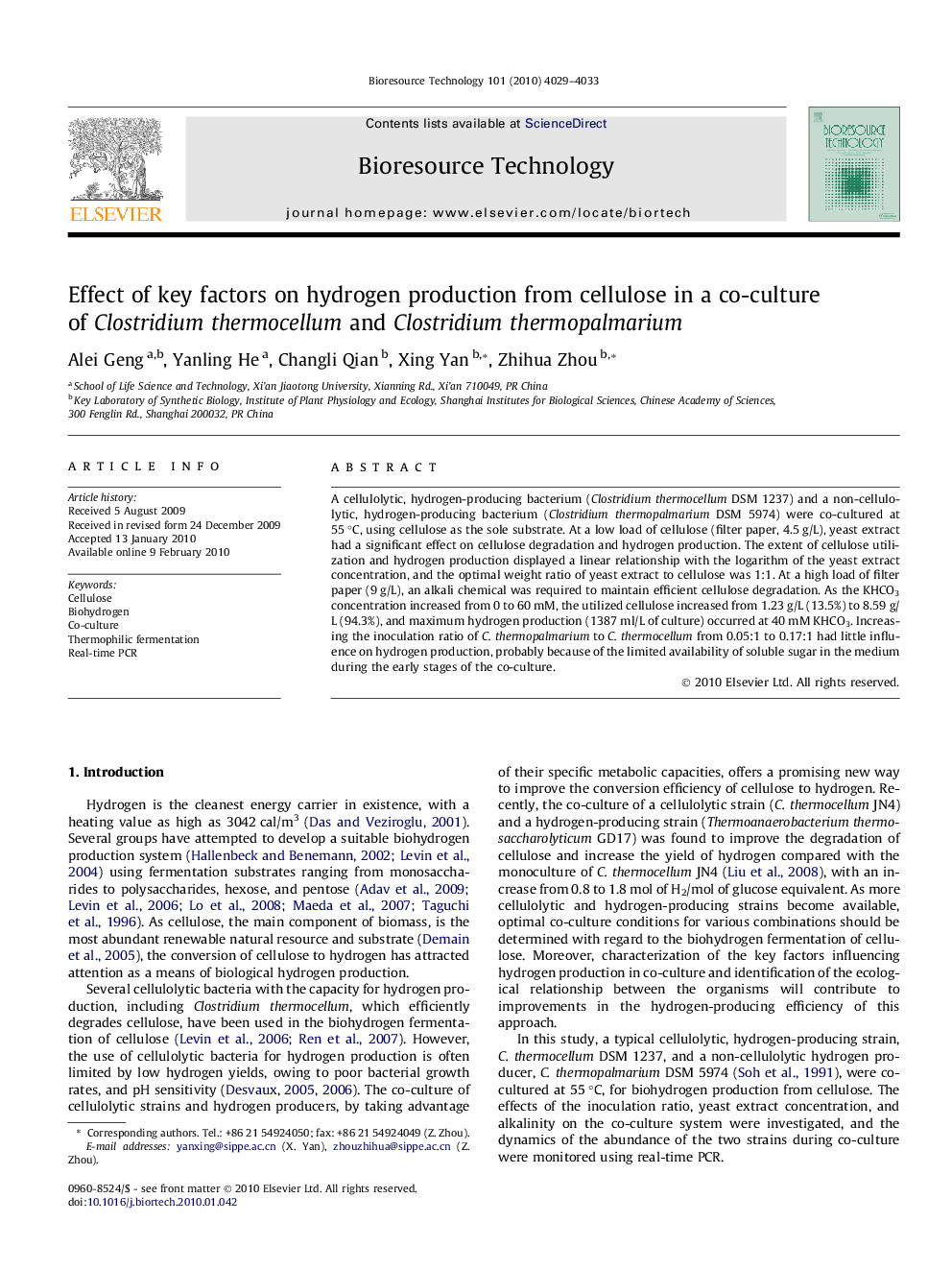| Article ID | Journal | Published Year | Pages | File Type |
|---|---|---|---|---|
| 683554 | Bioresource Technology | 2010 | 5 Pages |
A cellulolytic, hydrogen-producing bacterium (Clostridiumthermocellum DSM 1237) and a non-cellulolytic, hydrogen-producing bacterium (Clostridiumthermopalmarium DSM 5974) were co-cultured at 55 °C, using cellulose as the sole substrate. At a low load of cellulose (filter paper, 4.5 g/L), yeast extract had a significant effect on cellulose degradation and hydrogen production. The extent of cellulose utilization and hydrogen production displayed a linear relationship with the logarithm of the yeast extract concentration, and the optimal weight ratio of yeast extract to cellulose was 1:1. At a high load of filter paper (9 g/L), an alkali chemical was required to maintain efficient cellulose degradation. As the KHCO3 concentration increased from 0 to 60 mM, the utilized cellulose increased from 1.23 g/L (13.5%) to 8.59 g/L (94.3%), and maximum hydrogen production (1387 ml/L of culture) occurred at 40 mM KHCO3. Increasing the inoculation ratio of C. thermopalmarium to C. thermocellum from 0.05:1 to 0.17:1 had little influence on hydrogen production, probably because of the limited availability of soluble sugar in the medium during the early stages of the co-culture.
